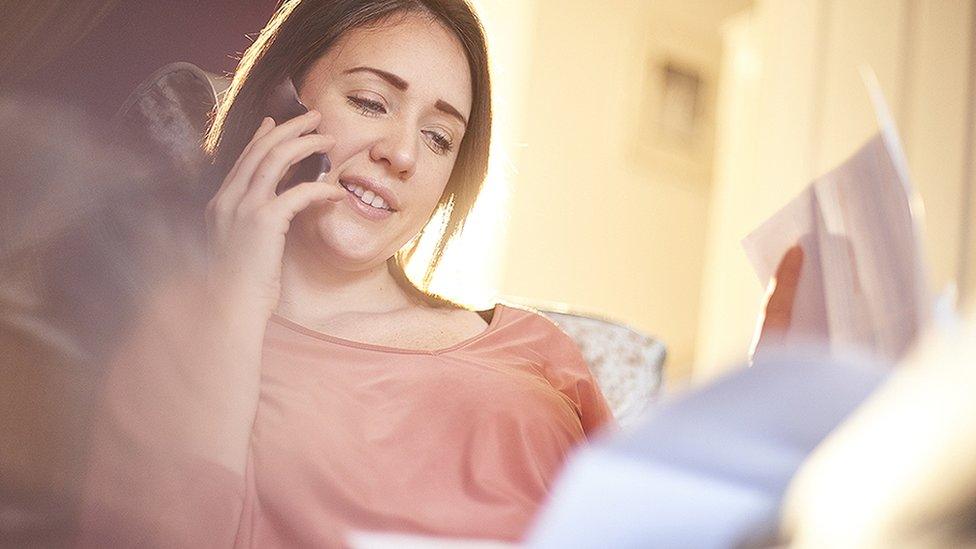Is the energy price cap wrong?
- Published

If you recently found out your energy bill was going up above the average price cap amount of £2,000 a year, it may be because the values used to work it out are based on pre-Covid levels.
Most homes - an estimated 22 million of us - now sit on the energy price cap.
The cap makes sure we don't get charged over a certain amount for the energy we use in our homes. Calculations are based on data about how much electricity and gas we use, on average, each year.
But this average data was last reviewed before many of us began spending more time working from home in early 2020.
In January 2022, a third of adults in the UK were still working from home, external at least one day a week.
Lots of people may still be using more gas and electricity to heat and power our homes, than when previously we were in the office full time.
Which means the average numbers the energy price cap is based on may no longer be accurate and should potentially be set even higher.
Ofgem, who regulate the energy market, told Radio 1 Newsbeat they took a decision to "pause" updating typical usage until they "can fully assess the impact of Covid-19 on domestic consumption".
It has admitted, external many of us will have used more energy since March 2020 at home, than we did before the pandemic.
None of this changes the price we pay for gas and electricity per unit.
Your energy company will know your more accurate personal usage.
What does this mean for you?
The price cap was brought in two years ago to put an upper limit per unit of gas and electricity.
The aim was to protect vulnerable customers - but not all homes are on the cap.
It recently went up by 54% on 1 April 2022, mainly due to a rise in the international costs suppliers pay for gas.
Ofgem say the price cap is "calculated using a number of factors, including a benchmark demand level" and those are then "adjusted using something called typical domestic consumption values [TDCV] information".
It's this that has not been updated.
Why are UK energy prices so high?
An Ofgem spokesperson told us : "Given the exceptional circumstances of Covid-19 we took the decision to pause the TDCV update until we can fully assess the impact of Covid-19 on domestic consumption.
"The next TDCV review is due to be delivered in 2023, and thereafter it will be reviewed every two years."
The most recently available data covers February 2018 - January 2020 for electricity and May 2018 - May 2020 for gas.
Since then millions of people have worked from home at least part-time, with many firms taking a split approach since Covid rules were lifted in the UK.
Using more than average
Student Hannah Cave, 19, told us over the last two years she has used "so much more energy" than normal because of lockdown.
For her and some other students, Hannah says even now lectures are not all back in person, meaning they are using more electric at home.
"Some have lectures as a half and half mix. It's going to be a painful price next month. We've heard next month is going to be a hefty bill".
Hannah could not understand why her bill was so much more than what is predicted based on the average usage for her size flat.

Hannah Cave is a student and has been working from home for two years
Newsbeat listener Rob Neve in Norwich has just moved into a new flat and has been using electric heaters in the day.
He said it was "staggering" how much he is topping up his pre-payment card.
What else affects how much we pay?
The level of the price cap is based on a household with typical consumption on a dual electricity and gas bill paying by direct debit.
If you pay by any other way or a have a pre-payment meter, the price cap is slightly higher.
The type of house you live in also affects typical use.
Mid-terraced houses will have lower average use, while detached houses will pay more, as a greater amount of heat can escape.
Homes with poor insulation are also likely to use more energy.


Follow Newsbeat on Instagram, external, Facebook, external, Twitter, external and YouTube, external.
Listen to Newsbeat live at 12:45 and 17:45 weekdays - or listen back here.